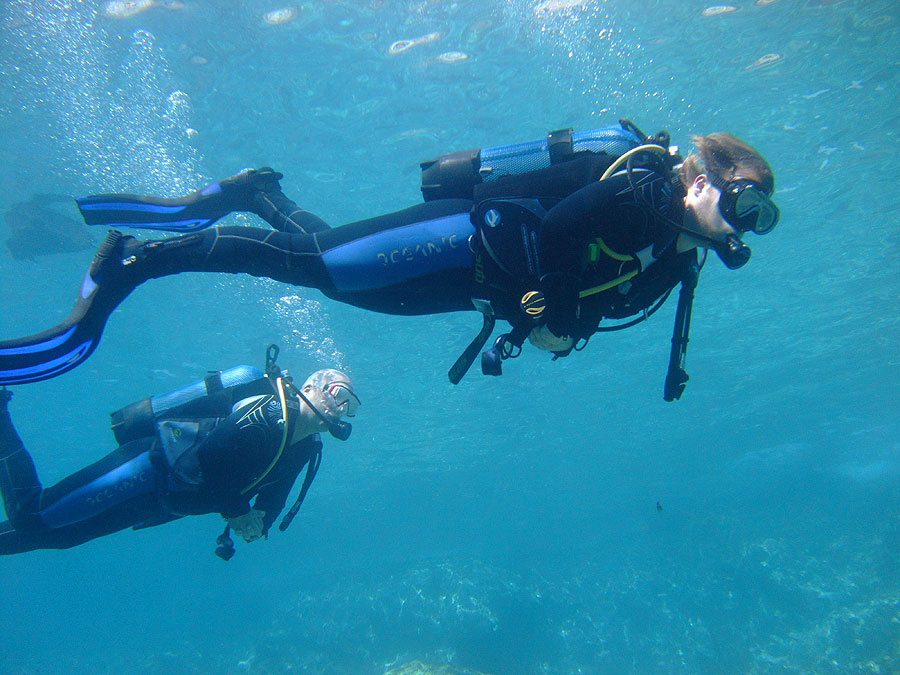One of the most common questions new divers ask is: how long does a scuba air tank last underwater? The answer isn’t as simple as a set number of minutes—it depends on several factors including your depth, tank size, and even how you breathe underwater.
Let’s explore what influences your air consumption and how long you can expect a tank to last during a typical dive.
Factors That Affect Air Tank Duration
Several factors determine how long your air will last:
- Tank size and capacity: Tanks come in different sizes, usually measured in litres or cubic feet. Larger tanks hold more air, giving you a longer dive.
- Depth of the dive: The deeper you go, the faster you use air due to increased pressure.
- Breathing rate: Everyone breathes at a slightly different rate. Factors like fitness, lung capacity, and experience all play a role.
- Environmental conditions: Cold water, strong currents, or swimming against surge can make you breathe faster.
- Exertion level: The more effort you use underwater, the quicker you’ll go through your air supply.
Common Tank Sizes and Average Dive Times
Here’s a rough guide to how long typical tanks last at shallow and moderate depths:
- 10L tank (70 cu ft): 30–50 minutes at 10 metres
- 12L tank (80 cu ft): 40–60 minutes at 10 metres
- 15L tank (100 cu ft): 50–80 minutes at 10 metres
At deeper depths, these times reduce significantly. For example, at 30 metres, air consumption triples compared to the surface.
How Depth Impacts Air Consumption
As you descend, the pressure around you increases. Every 10 metres adds another atmosphere of pressure, compressing the air you breathe. This means:
- At 10 metres, you use air twice as fast as at the surface.
- At 20 metres, air is consumed three times faster.
- At 30 metres, it’s four times faster.
A dive to 30 metres will drain your tank much more quickly than a shallow reef dive at 10 metres. This is why depth plays such a big role in dive planning.
How Diver Behaviour Affects Air Use
Your behaviour underwater can have a surprising impact on your air consumption. Divers who stay relaxed, maintain good buoyancy, and move efficiently use less air than those who kick hard, overexert, or feel anxious.
Practising slow, deep breaths helps conserve air, while staying calm reduces unnecessary exertion. Proper weighting and streamlined gear also reduce drag, making every kick more effective and less tiring.
Using a high-quality scuba air tank that suits your dive style can further improve your overall efficiency and comfort underwater.
How Dive Planning Helps Manage Air Supply
Experienced divers use tools like dive computers and pressure gauges to monitor their air throughout a dive. Many also calculate their surface air consumption (SAC) rate, which helps estimate how long their air will last at different depths.
Planning your dive includes setting a turn-around point—usually when you’ve used half your air—so you have enough to safely return to the surface with a reserve.
Last Thoughts: How Long Should You Expect?
There’s no one-size-fits-all answer to how long a scuba air tank lasts. Most recreational divers get 40 to 60 minutes at shallow depths, but your time will vary based on tank size, depth, and personal air use.
The best way to improve your dive time is through experience, relaxation, and efficient diving practices. With the right preparation, you’ll enjoy longer, safer, and more comfortable dives.

